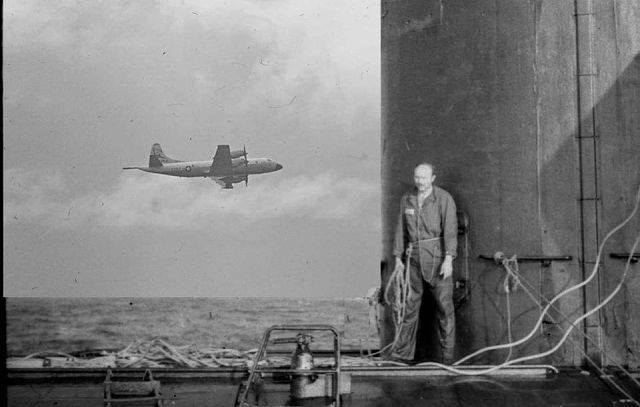THREAD: Over the years, Santa Claus has had an interesting relationship with nuclear weapons. During World War II—on a visit to the Clinton Engineer Works in Oak Ridge, Tennessee—his sack of toys was subjected to a thorough search before he was allowed to enter the secret city. 

In 1955, a misdialed phone number by a Colorado Springs child led a clever colonel at the Continental Air Defense Command—and, later, NORAD—to craft a public relations campaign to protect Santa Claus from godless Soviet communists and normalize nuclear war.gizmodo.com/how-the-u-s-mi…
“When a childish voice asked COC Commander Col. Harry Shoup if there was a Santa Claus at the North Pole, he answered much more roughly than he should …: ‘There may be a guy called Santa Claus at the North Pole, but he’s not the one I worry about coming from that direction.’” 

Here’s a staged publicity photograph circa late 1950s to 1960s of two Air Force enlisted men “tracking” Santa’s sleigh at NORAD, or possibly at a SAGE air defense radar site. 

In the early 1960s, Santa even gave the US Air Force a brand new liquid-fueled Titan I ICBM armed with a 4.5-Megaton W38 warhead (for use against the especially naughty?). 

On October 28, 1961—two days before the Soviet Union conducted its much-publicized test of a massive 50-Megaton thermonuclear bomb in the Arctic—President John F. Kennedy tried to reassure Miss Michelle Rochon of Marine City, Michigan, that “you must not worry about Santa Claus.” 

Here is the backstory to Michelle’s letter and Kennedy’s response: washingtonpost.com/history/2019/1…
From 1964-70, the @AFmuseum in Dayton, Ohio, decorated its retired Atlas D ICBM (which once carried a W49 1.4-Megaton warhead) as Santa Claus. Ho-ho-holocaust! 



In 2013, in an unusual joint venture, the Votkinsk Machine Building Plant in Russia and Grandfather Frost (Santa Claus) announced the deployment of the new Supersonic Low-Earth Intercontinental Gift Hauler (SLEIGH). 

(Just kidding. That photo was actually tweeted by then-Deputy Prime Minister of Russia Dimitry Rogzin sarcastically wishing a happy new year “to our NATO friends!” I coined the acronym a few years later. Sadly, Rogozin’s tweet was deleted sometime in 2020.)
https://twitter.com/Rogozin/status/416913238807560192
• • •
Missing some Tweet in this thread? You can try to
force a refresh


























